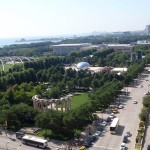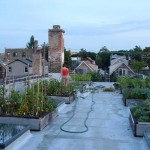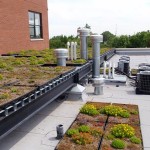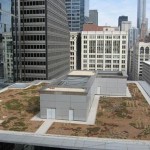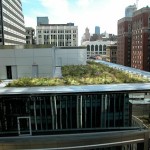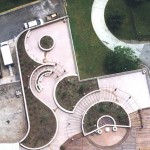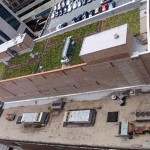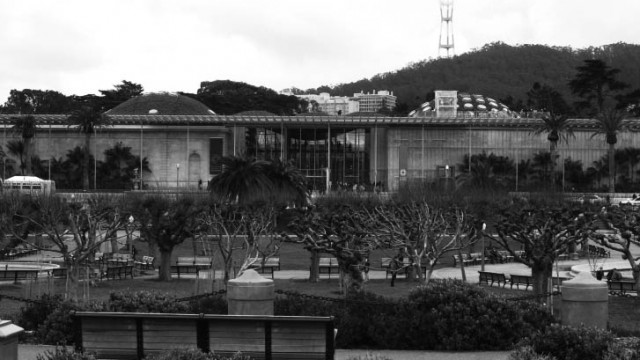
Green or “living” roofs are building roofs covered with vegetation, planted over a waterproof membrane covering the roof substrate. Green roof systems have been popular in Europe in modern times since the 1960’s when they were first developed in Germany, but green or sod roofs have been used in Scandinavia and northern Europe for centuries. In the past 15 years they have become increasingly popular in North American cities, including the experimental green roof installed on City Hall in Chicago. Chicago’s City Hall roof was planted to determine the effects a green roof would have on the microclimate of the roof, and therefore, the overall effects on the metropolitan environment. The phenomenon being tested, of a metropolitan area being significantly warmer than surrounding rural areas, is called the urban heat island effect . On Chicago’s City Hall roof, temperatures on a hot day are typically 1.4–4.4 degrees Celsius (2.5–8.0 °F) cooler than they are on traditionally roofed buildings nearby.
Besides mitigating the urban heat island effect, other benefits of green roofs include:
- Retainage of stormwater and improvement of water quality
- Energy savings through added insulation
- Enhancement of quality of life for building occupants
- Increased habitat diversity
- Improved air quality
- Increased roof life span
- Increased property value
Amanda has consulted on green roof installation projects for several existing buildings, including a food-producing roof for the Chicago Public Schools- Chicago HOPES Grow Hope Community Outreach Center. She has given many lectures on the benefits of green roofs and contributed content to the Green Roofs for Healthy Cities (GRHC) course manual publication Introduction to Rooftop Agriculture, 2010. Her green roof training includes completion of technical courses under the GRHC technical green roof training program.
